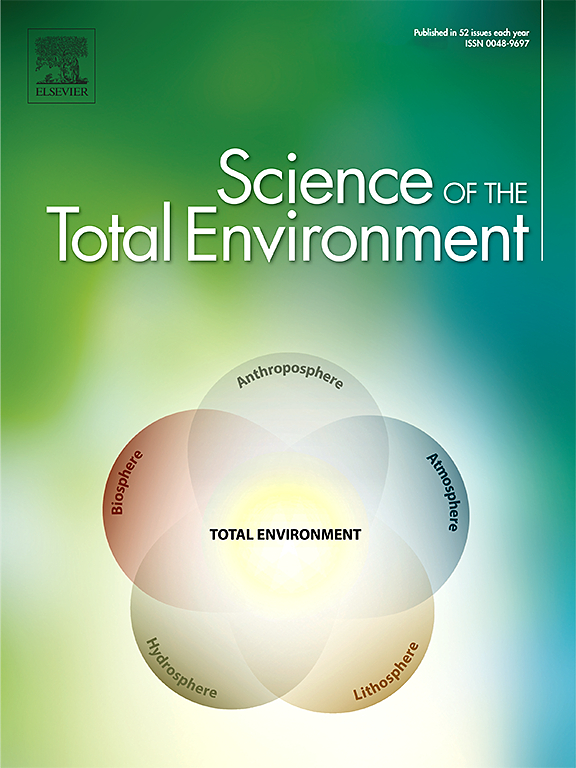Supersaturation and nasal anatomy: Correcting critical gaps in aerosol dosimetry for equitable air pollution risk assessment
IF 8.2
1区 环境科学与生态学
Q1 ENVIRONMENTAL SCIENCES
引用次数: 0
Abstract
Current inhaled aerosol dosimetry methods, used to assess air pollution risks, may significantly underestimate deposited particle doses by neglecting two key factors in the upper airways: anatomical variability and water vapor supersaturation (RH > 100 %). While personalized dosimetry accounting for anatomical differences is a longer-term research goal, the influence of supersaturation—triggered by some scenarios like breathing cold (<15–20 °C) or saturated air (<27 °C)—demands urgent attention.
Theoretical models suggest that supersaturation can induce condensational growth in particles >10–20 nm, leading to rapid, orders-of-magnitude size increases to supermicrometer dimensions, thereby significantly altering deposition patterns in the respiratory tract. This results in higher dose estimates than those predicted by classical models, which focus primarily on hygroscopic growth under RH < 100 %.
A rough analogy to engineered systems like condensation particle counters illustrates how even non-hygroscopic and hydrophobic particles, traditionally considered inert, can undergo substantial condensational growth in supersaturated conditions. A key unanswered question remains: how will such particles behave within the complex environment of real airways under supersaturating conditions?
Therefore, integrating supersaturation and individual anatomical factors into air pollution risk assessments is crucial for improving public health strategies, particularly for vulnerable populations exposed to relevant climatic conditions.

过饱和和鼻解剖:纠正气溶胶剂量学中的关键缺陷,以实现公平的空气污染风险评估
目前用于评估空气污染风险的吸入气溶胶剂量测定方法,由于忽略了上呼吸道的两个关键因素:解剖变异性和水蒸气过饱和,可能严重低估了沉积颗粒的剂量。100%)。虽然考虑解剖差异的个性化剂量测定是一个长期的研究目标,但过度饱和的影响——由呼吸寒冷(15-20°C)或饱和空气(27°C)等情况引发——需要紧急关注。理论模型表明,过饱和可以诱导10-20 nm颗粒的缩聚生长,导致颗粒尺寸迅速、数量级地增加到超微米尺寸,从而显著改变呼吸道中的沉积模式。这导致比经典模型预测的剂量估计更高,经典模型主要关注RH <下的吸湿性生长;100%。一个与冷凝粒子计数器等工程系统的粗略类比表明,即使是非吸湿性和疏水性粒子,传统上被认为是惰性的,也可以在过饱和条件下经历大量的冷凝生长。一个关键的未解问题仍然存在:在过饱和条件下,这些颗粒在真实气道的复杂环境中会如何表现?因此,将过饱和度和个体解剖因素纳入空气污染风险评估对于改善公共卫生战略至关重要,特别是对于暴露于相关气候条件下的弱势群体。
本文章由计算机程序翻译,如有差异,请以英文原文为准。
求助全文
约1分钟内获得全文
求助全文
来源期刊

Science of the Total Environment
环境科学-环境科学
CiteScore
17.60
自引率
10.20%
发文量
8726
审稿时长
2.4 months
期刊介绍:
The Science of the Total Environment is an international journal dedicated to scientific research on the environment and its interaction with humanity. It covers a wide range of disciplines and seeks to publish innovative, hypothesis-driven, and impactful research that explores the entire environment, including the atmosphere, lithosphere, hydrosphere, biosphere, and anthroposphere.
The journal's updated Aims & Scope emphasizes the importance of interdisciplinary environmental research with broad impact. Priority is given to studies that advance fundamental understanding and explore the interconnectedness of multiple environmental spheres. Field studies are preferred, while laboratory experiments must demonstrate significant methodological advancements or mechanistic insights with direct relevance to the environment.
 求助内容:
求助内容: 应助结果提醒方式:
应助结果提醒方式:


